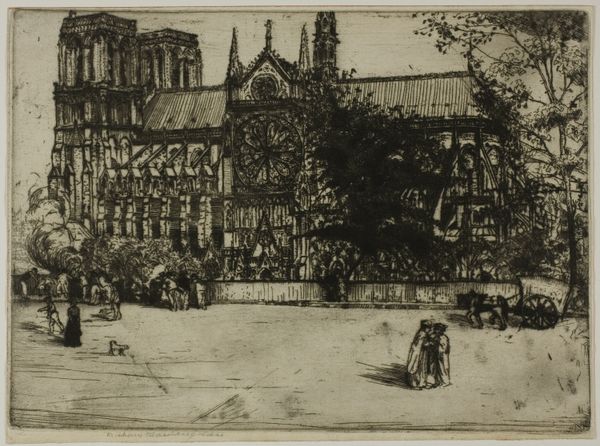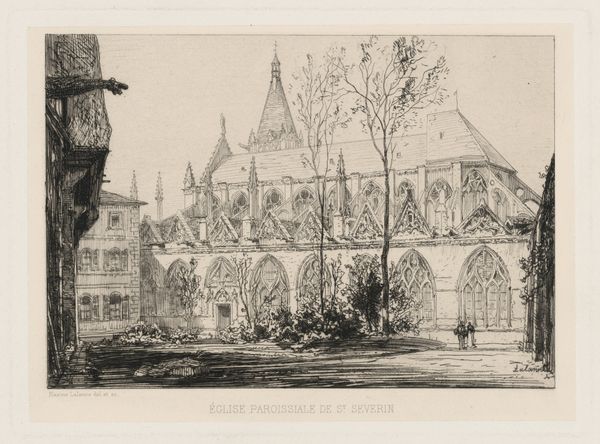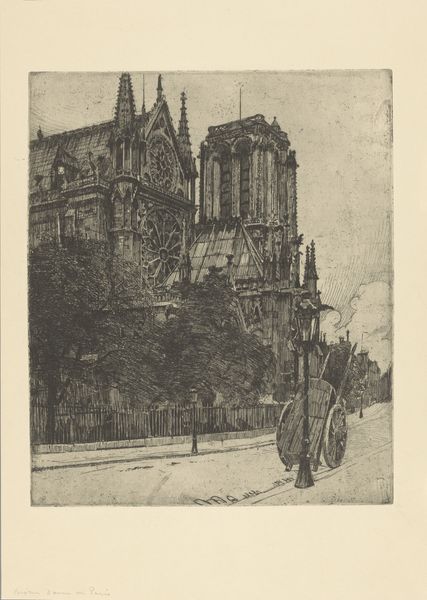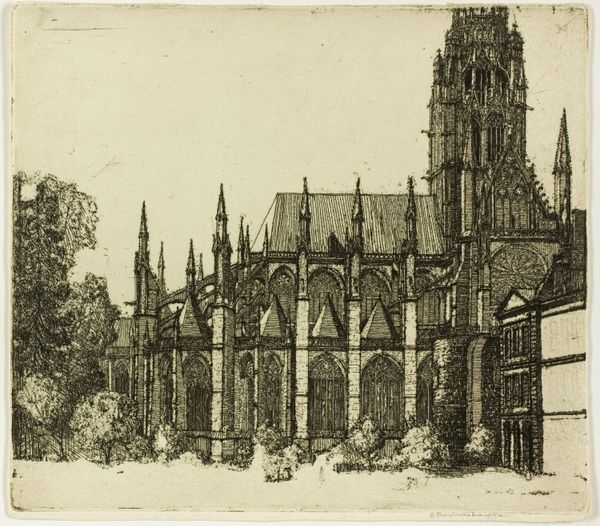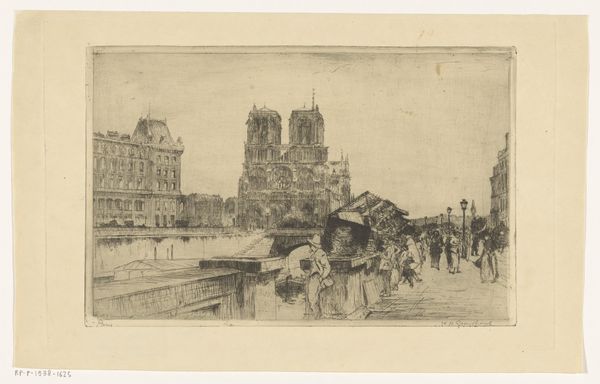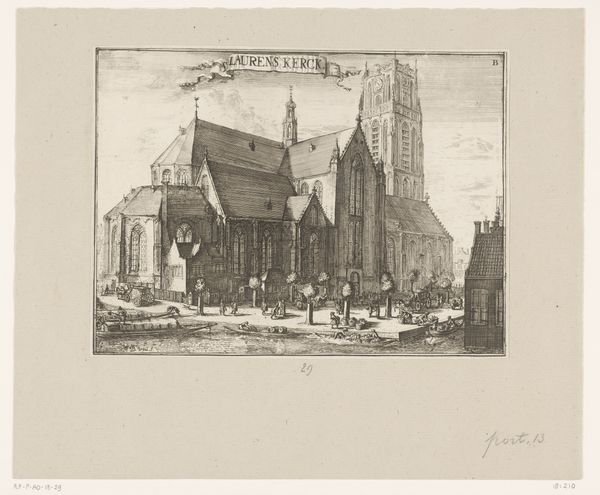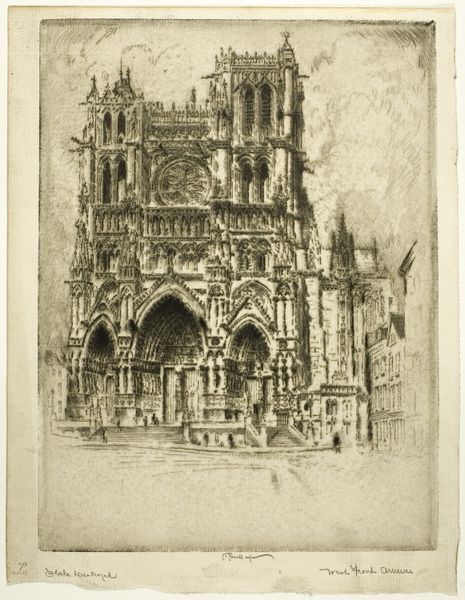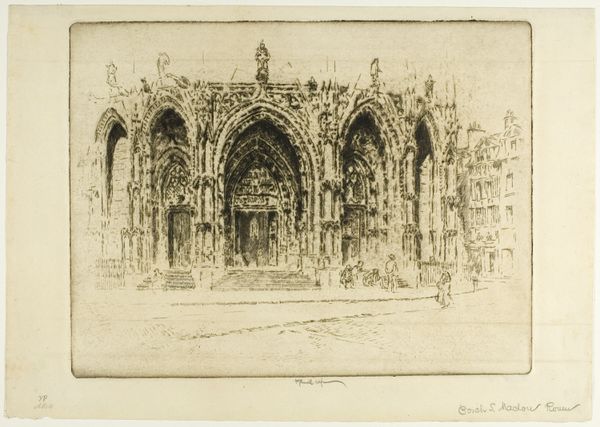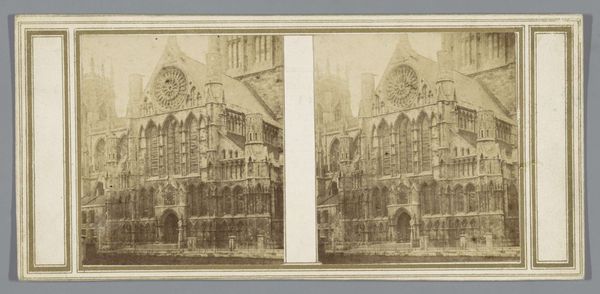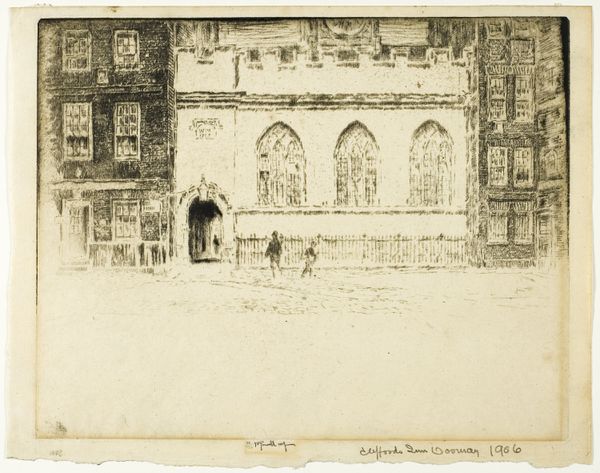
drawing, print, etching, paper, architecture
#
drawing
# print
#
etching
#
paper
#
cityscape
#
architecture
#
realism
Dimensions: 186 × 254 mm (image/plate); 212 × 257 mm (sheet)
Copyright: Public Domain
Curator: We're looking at Donald Shaw MacLaughlan's etching from 1900, "Notre Dame, Paris," currently held at The Art Institute of Chicago. Editor: It's incredibly detailed, but also feels light, almost ethereal. The stark white foreground really emphasizes the density of the etched lines in the cathedral itself. I’m struck by how this one building looms so dramatically over the thin strip of the lower scene. Curator: Yes, MacLaughlan really captures the imposing presence of Notre Dame, a building saturated with centuries of spiritual and civic symbolism. Think about what this structure represented to Parisians in 1900 – a monument to faith, a marker of resilience, even national identity. The way he uses line variation pulls out the iconic rose window like a beacon. Editor: And that density of line also tells a story about labor, doesn’t it? Etching is a time-intensive process. It’s interesting to consider MacLaughlan’s own labor mirroring the generations of skilled laborers who built the cathedral itself – different scales, of course, but a connection to the hand-made, to tangible effort and skill. The way etching so economically uses the expensive paper to generate shadow suggests both a cost-saving ethos as well as highlighting the linear detail in relation to space. Curator: Absolutely. Plus, Notre Dame isn't just stone; it's an anthology of symbolism. The towers, reaching heavenward, are testaments to man’s aspirations. Then you consider how often we’ve seen this cathedral serve as a symbol, think Victor Hugo to present-day images after the fire. These images become shorthand for French culture itself. Editor: Thinking about it being an etching, produced for reproduction and distribution, brings up another layer. It makes me consider the artwork's intended audience and the role it played in shaping a view of the cathedral as something that can also be commodified as something artistic in itself. It asks how architectural heritage turns into an artwork with commercial circulation in ways unavailable to laborers working on the structure over generations. Curator: Indeed. Seeing it, understanding it – and possessing its image become intertwined. Thank you for your thoughts about the social and material context of this etching, its creation, labor, and consumption. Editor: It was a pleasure looking closer together. The emotional, social, and cultural complexities of this etching come through even more strongly considering your points.
Comments
No comments
Be the first to comment and join the conversation on the ultimate creative platform.
